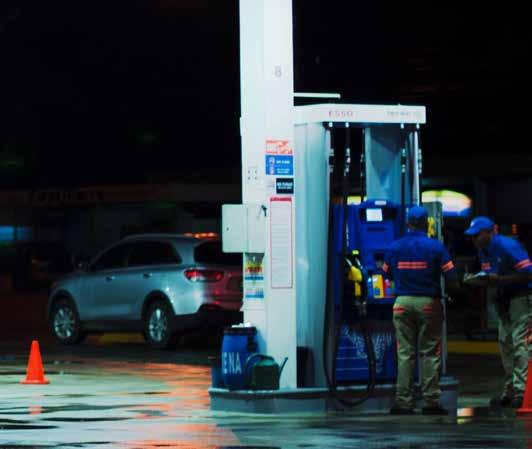
3 minute read
Fuelling up for the future
Service stations are evolving but remain an attractive and profitable business and a highly popular choice among buyers, including those going into business for the first time.
Revenue may have dropped over the past five years due to global volatility in crude oil prices, but margins have increased for the 1,300 full-service and unmanned outlets across New Zealand.
Advertisement
Bayleys business sales expert Prashant Vijan says service stations are considered a profitable business if they have two or more revenue streams – fuel, plus convenience shop sales and possibly a cafe, which can generate higher margins for the retailer.
“They are attractive for people getting into business for the first time because they feel it is a safe commercial enterprise environment,” says Prashant. “Location, business history and performance through fuel and shop sales are the most important factors for buyers when a service station comes onto the market.”
The market is increasingly competitive for shop sales and Prashant says shop areas must be well presented, supplied and stocked with a good range of products, as people tend to impulse-buy at service stations. When run well, this can be a profitable side of the business for operators.
Whether fuel or shop sales are the most profitable also depends on the service station’s location, but both sides are important. Generally, fuel revenue will be higher, but at a lesser margin, while shop sales may be at a lower volume with a higher margin.

“It could almost be a 50/50 split, so that’s why buyers look at how the shop is performing and not just fuel sales,” Prashant says.
A cafe adds further value, as proven by BP’s extremely successful Wild Bean cafes. “The coffee component is important as people see it as a convenience during the day.”
Whilst there is always strong demand for major brands like BP, Mobil and Caltex, other brands like G.A.S., Challenge, and NPD are equally being preferred by potential buyers. If you’re selling, you’ll need to be able to show would-be buyers how well the business is performing in its catchment area. Presentation of the forecourt and shop is important, as is the availability of the business books and financial history.
“Banks are generally asking for a three-year history from a potential purchaser, and evidence of shop and fuel turnover, before lending 50% of the sale price – leaving a buyer to either use equity from their property or raise the money by another means for their 50% share,” says Prashant.
Prices for service stations vary across New Zealand. In the Auckland region, existing stations can range from the mid-$500,000s up to $2.5 million, depending on fuel sales and earnings before interest, tax, depreciation and amortisation (EBITDA), he says. For new-builds, it can start at over $3 million and the barriers to entry are high, as it depends on land availability and existing development in and around the site.
“In a well-established residential area there would be challenges in trying to get consent and build a service station, although it’s not impossible.”
The rise of self-service stations has been the biggest change for the industry. Minnows among the giants – Gull, Waitomo and Allied – specialise in unmanned pumps and have established successful business models by cutting overheads so they can offer cheaper petrol.
Prashant says they now face the prospect of every brand offering fuel discounts. “It negates that model a bit and that is where operators look at maximising value by having the forecourt and fuel sales as well as the grocery and shop sales.
“Another major trend recently has been the large number of older stations being revamped and refreshed into a modern facility with a new forecourt and smart shop design, as people do consider that and don’t want to pull up to a tacky looking service station,” Prashant says.
Buyer demand for service stations is as strong as ever and purchasers are not seeing them as a sunset industry despite growing interest in electric and alternativefuel vehicles.
Prashant says the transition to these technologies will play out over time, and service stations will continue to evolve for the new environment.

Jayson Hayde, National Director of Business Sales, Bayleys Real Estate

Prashant Vijan, Business Sales Broker, Bayleys Real Estate










